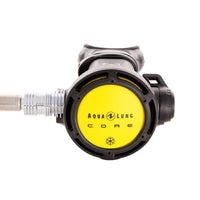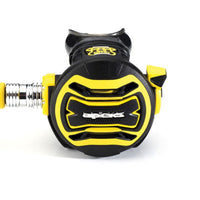Octopus
Dive Octopus Gear
In scuba diving, an "octopus" or "octo" is a secondary demand valve (second-stage regulator) that serves as a backup air source. It's essential safety equipment that allows a diver to share air with a buddy in an emergency. Here's what you need to know:
What is a Dive Octopus?
A dive octopus, often called an "octo, " is a redundant second-stage regulator attached to the diver's primary regulator. It's named for its long, flexible hose that can resemble an octopus's tentacle.
The function of a Dive Octopus
The primary function of a dive octopus is to provide an alternative air source for the diver or their buddy in an emergency. It could be due to a primary regulator malfunction or a diver running out of air. The octopus is designed to deliver air at the same pressure as the primary regulator.
Features of a Dive Octopus
A typical dive octopus features a bright yellow hose and cover for easy identification underwater. It's usually longer than the primary regulator's hose to allow for easier air sharing between two divers. Some models also have an adjustable inhalation effort control for added comfort.
Importance of a Dive Octopus
Having a dive octopus is a standard safety measure in recreational scuba diving. It's an essential part of the diver's gear setup and is required by most dive operators. The octopus allows divers to assist each other in out-of-air situations, making dives safer.
Maintenance of a Dive Octopus
Like all scuba equipment, a dive octopus requires regular maintenance to ensure its reliability and performance. It includes rinsing it with fresh water after each dive, regular inspections for wear and tear, and professional servicing at least once a year.
In conclusion, a dive octopus is a critical piece of scuba diving equipment contributing significantly to diver safety. It provides a reliable backup air source, enabling divers to respond effectively to emergencies.






